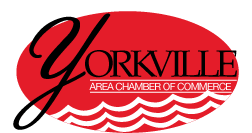Strong Sites in Shaky Times: Smart Web Strategies for Small Businesses in a Slowing Economy
When markets falter and customer spending tightens, small businesses face a unique kind of pressure. There’s less room for error, and every customer interaction needs to count. But while many owners cut back on marketing or halt site improvements, downturns actually present a window to double down on digital performance. A strategically honed website can become the engine that not only sustains a business during leaner times but also helps it emerge stronger. It’s not about flashy redesigns or bloated platforms—it’s about clarity, speed, trust, and making it unmistakably easy for people to say yes.
Reduce Load Time, Increase Load Confidence
Waiting is costly. With every added second of page load time, bounce rates climb, and conversion opportunities vanish. People assume—often correctly—that slow sites mean disorganized businesses. Tools like Google PageSpeed Insights or GTmetrix offer clear starting points to strip bloat, compress images, and clean up code. But beyond technical tweaks, there's a deeper opportunity: speed signals competence. A fast site feels more reliable, more responsive, and more deserving of trust, especially when wallets are tight and decisions more considered.
Stretch Your Budget by Hiring Smart, Not Big
Hiring a web designer doesn’t have to mean signing a contract with a big-name agency—many independent designers offer cost-effective packages tailored to small business needs. It’s all about focusing on clean, strategic updates that improve usability and drive action rather than bloated visual overhauls. When sharing design concepts with your web designer, consider converting JPG files into PDFs to make them easier to email and more consistent in quality across devices—click here for more on how to handle that conversion. A thoughtful approach to collaboration and communication keeps your project moving forward without unexpected expenses.
Leverage Social Proof as Emotional Currency
Customer anxiety doesn’t just stem from tight budgets—it also comes from the fear of wasting money. That’s why websites need to lean hard into testimonials, case studies, and review integration. During downturns, emotional reassurance becomes just as important as functional appeal. Social proof helps visitors imagine themselves getting value and walking away satisfied. But it needs to be real and specific—vague praise won't move the needle. Highlight stories that mirror the concerns of new prospects, and place them near points of conversion, not hidden on a separate "testimonials" page.
Build Frictionless Funnels, Not Fancy Features
While it’s tempting to chase advanced features or plugins during a website revamp, what really drives conversion is removing unnecessary steps. Contact forms should be short. Checkout processes should not require creating an account unless absolutely necessary. Phone numbers should be clickable and visible without scrolling. The goal isn’t to impress with bells and whistles—it’s to reduce the distance between curiosity and commitment. Especially in slower economies, even slightly smoother funnels can mean the difference between a sale and a bounce.
Design for Mobile, Then Check Again
Most small businesses still build with a desktop-first mindset, even though the bulk of their traffic comes from phones. And during economic downturns, people browse more before they buy—which means they’re often making early impressions on the go. A responsive site isn’t enough; it has to work on mobile: fast, legible, and thumb-friendly. That means larger tap targets, less copy, and no tiny popups that frustrate users into giving up. If a website looks like it wasn’t built for someone’s primary device, they’ll find one that was.
Make the Call to Action Impossible to Miss or Misread
A call to action is not just a button—it’s a handshake, an invitation, and a line in the sand. But many small business sites bury theirs, leave them too general, or slap five different CTAs on the same page. In tougher economies, people crave confidence. The right CTA doesn’t just say "Contact Us"—it tells them what happens next. Will they get a quote? A callback? A free consultation? Be generous with clarity. People don't want to jump into the unknown, especially not when every decision feels weightier than usual.
A down economy doesn’t automatically mean shrinking revenue. It means businesses need to sharpen their tools and shift from passive presentation to active performance. A website shouldn’t be treated like a brochure—it should act like a salesperson. One that answers questions, removes doubts, and gently nudges people toward action. For small businesses, this isn’t just a digital asset—it’s the front line. Those who take the time to tune their sites for trust, speed, and clarity won’t just survive—they’ll likely set the tone for the recovery to come.
Discover the power of connection with the Yorkville Area Chamber of Commerce and unlock valuable resources to elevate your business in our vibrant community!
